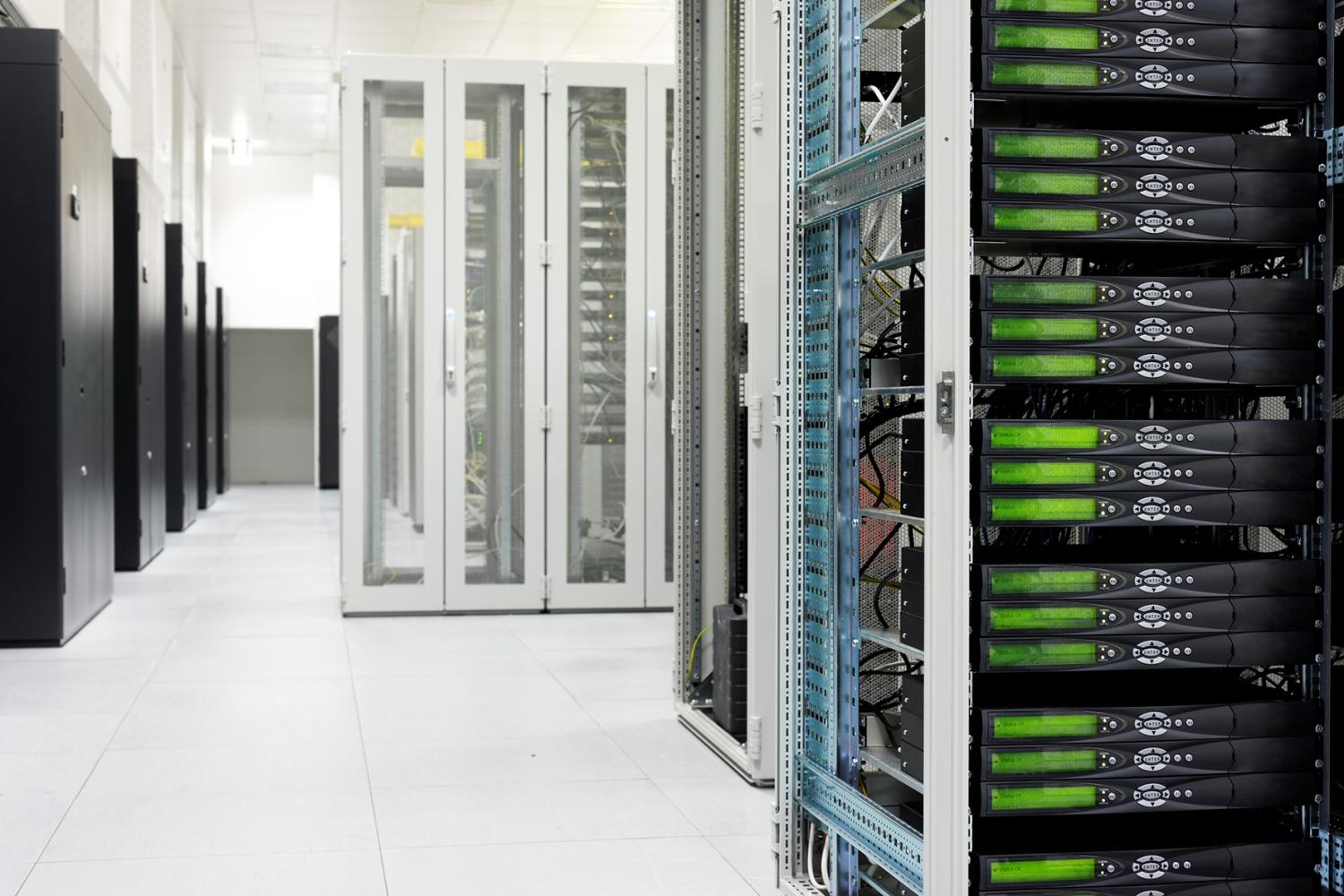Last fall, the Fifth National Climate Assessment—a quadrennial analysis from the U.S. Global Change Research Program—outlined the country’s dire climate status. Among several takeaways, it revealed that the U.S. is warming faster than the rest of the world from human-induced climate change, and that we’re missing the mark on critical climate goals.
Notably, this installment of the Assessment emphasized social systems and justice—directly linking reductions in greenhouse gas emissions with reducing racial disparities in the U.S. As the report lays bare, climate impacts have unequal burdens, which fall most heavily on communities of color and low-income communities.
Yet to effectively address these harms and lay a strong foundation for climate and environmental justice, policymakers must acknowledge and confront the growing environmental impacts of an emerging technology: artificial intelligence (AI). These impacts are complex, but the industrial shift AI is propelling could mirror previous technologies by unequally distributing societal benefits and creating winners and losers. U.S. climate governance cannot overlook how recent developments in AI and cloud technology contribute to the environmental burdens that communities of color and low-income families face.
This report explores how climate justice is not only contingent upon how it serves these communities, but also why it’s critical to proactively mitigate the environmental harms associated with rapid technological shifts. By fundamentally changing how we live, both AI and climate change could tip the scales of U.S. communities in ways that are unfair or unjust. It will be our policies, regulating and guiding these forces, that ultimately determine their social impacts.
Justice is inherent to the success of US climate policy and digital transformation
The first-ever discussion of social justice in the National Climate Assessment was a landmark move. But there’s a history here. Legacies of policy inaction, neglect, and intentional segregation and exclusion have inequitably distributed environmental hazards and climate risks to disproportionately affect communities that often possess limited agency in decisionmaking processes. These inequities undermine the efficacy of U.S. climate policy, and therefore, the success of U.S. climate policy hinges on a strong climate and environmental justice (CEJ) foundation.
Ultimately, climate policy isn’t just about lowering greenhouse gas emissions. It’s also social policy, shaping the well-being of individuals and communities. CEJ means that everyone—irrespective of race, ethnicity, income, or ability—has the right to the same environmental protections and benefits, as well as the opportunity to be meaningfully involved in decisionmaking. And it cannot just be an aspirational goal—it’s an indispensable factor in crafting effective climate governance.
Meanwhile, the extraordinary progress of AI carries a growing, but often hidden, environmental footprint. The proliferation of tech applications such as generative AI and the expansion of ubiquitous cloud services remain tethered to digital infrastructure and supply chains. This elevates the challenge of stimulating economic growth without comparable increases in emissions—a task that University of Florence Assistant Professor Roberto Verdecchia has said is “physically impossible.” Verdecchia has also highlighted that environmental sustainability is often overlooked: “In the race to produce faster and more-accurate AI models, environmental sustainability is often regarded as a second-class citizen.”
Technological innovation is often promoted as a mechanism to decrease carbon emissions, with digital operations and infrastructure in particular cited as “cleaner” advancements from industrial production reliant on fossil fuels. Yet this relationship remains unclear and has lacked a compelling demonstration. Despite their operation in a virtual space, AI and the cloud have considerable tangible effects. They will intensify greenhouse gas emissions, consume increasing amounts of energy, and require larger quantities of natural resources. This emerges, in one form, through rising energy demands.
Greater access to generative AI—systems designed to create content based on previous data—embodies this trend. Research suggests a single generative AI query consumes energy at four or five times the magnitude of a typical search engine request. Image-generating tasks are also far more energy-intensive compared to those involving text alone. By perpetuating high-carbon-emitting behaviors, AI systems play a significant role in exacerbating the climate crisis. And as the popularity of chatbots and image generators surges—intensifying the integration of generative models and spurring competition between tech titans—it will propel explosive growth in daily queries and further deepen environmental concerns.
By amplifying social stressors such as housing insecurity, energy costs, and health care costs, the direct and indirect impacts of climate change accelerate the risk that the next disaster will lead to destitution. Phasing out fossil fuels will save lives, including sources powering the next breakthroughs in AI research and development. This phase-out is critical to reduce the health burden of localized pollution and curb the long-term consequences of climate change that may accompany substantial advancements in U.S. tech infrastructure.
However, transitional policies that prepare the built environment and workforces for a lower-carbon economy also often lack a consideration of justice. The “green” economy is estimated to require millions of new jobs, and the digital industrial sector—accelerated by AI—produces an opportunity to provide well-paying and meaningful jobs. However, there’s no guarantee that these jobs will be accessible or targeted to those who need them most.
By centering justice, we can mold a more transformative and sustainable climate policy designed for an emerging digital future. Lawmakers must not only prioritize reducing the energy inputs and emissions associated with AI, but also improve the well-being of the most-impacted populations.
Governance must empower communities to benefit from AI and climate change policies
CEJ and AI development are tightly coupled, but their policies remain distinct. Without justice guiding policy creation, the adverse environmental impacts of AI and climate change could disproportionately burden poor and marginalized communities in the U.S. The repercussions of machine learning on the environment are not predetermined; instead, they will significantly depend on societal choices, which can shape its overall influence. AI is a vital tool to reduce climate harm, but it cannot be allowed to further inflame disproportionate negative health and environmental outcomes for underserved communities.
Additional research and data are crucial for enhanced climate governance, as it remains nearly impossible to accurately evaluate the negative environmental externalities of AI. The AI research community has called for standard methodologies for assessing and comparing the data inputs and emissions of AI models. But the impasse is further entrenched by a lack of transparency from AI companies: Some may not track and capture important data, or are not inclined to make it public. Algorithmic impact assessments, similar to environmental impact assessments, have also been proposed to evaluate potential environmental threats. However, they must surmount persistent challenges due to opacity.
These obstacles accentuate the urgency of thoughtful environmental policy around AI. As climate change intensifies, it’s imperative to encourage transparency and accumulate meaningful data about both the direct and indirect environmental effects of AI computations. These measures can help inform unified policy decisions that merge AI sustainability considerations with CEJ.
AI holds solutions and poses challenges for climate and environmental justice
Emerging technologies, like AI, are key to a modern U.S. climate strategy. AI and machine learning will assume prominent roles in mitigating the escalating effects of climate change, adapting to a warmer planet, and achieving climate targets.
AI can enhance forecasting methods and bolster preparation for extreme weather conditions. New computational models are faster, more accurate, and cheaper—enabling better preparation for natural disasters. Machine learning innovations can repurpose and reuse industrial outputs; for example, using surplus heat from data centers to warm residences. AI can also boost data center efficiency, sustainably transform electric grids, and devise smart eco-cities. The ability to digest large amounts of data and swiftly engage with complex scenarios make AI particularly well-suited to empower decisionmaking and tailor approaches to community needs. In addition, recent AI models can generate novel materials to facilitate the transition to a greener future.
Yet the training and inference phases of large language models (LLM) such as multi-modal chatbots are intensive processes. Large-scale algorithms impose a substantial burden on energy and natural resources, often fueled by nonrenewable sources. They require ballooning computational resources, just as the energy and infrastructure needs of AI systems are growing themselves thanks to advancements such as generative AI and mounting industry competition.
Generative models with broad functionality such as Bard or ChatGPT employ far more power per query than conventional applications, and require hardware at levels beyond task-specific computing systems. The more we ask models to perform wide-ranging tasks, the greater the amount of energy and carbon necessary. For instance, supporting AI’s pervasive need for real-time application requires a power increase for data centers.
And LLMs grow much bigger year after year. Training earlier chatbots models such as GPT-3 led to the production of 500 metric tons of greenhouse gas emissions—equivalent to about 1 million miles driven by a conventional gasoline-powered vehicle. This same model required more than 1,200 MWh during the training phase—roughly the amount of energy used in a million American homes in one hour. Future iterations may perpetually increase these metrics. Updated versions such as GPT-4 have much greater needs and generate higher carbon emissions, though a lack of accessible input and output information renders analyses difficult.
This data characterizes just one model among many. Momentum is unlikely to slow without intervention, and generative AI stands to intensify these measures while swelling the magnitude of negative environmental impacts. Even Sam Altman, CEO of OpenAI, conceded that future AI research and development will consume much more power than we expect.
But the concern regarding AI’s environmental impact includes more than just energy or emissions. Our rapidly growing AI infrastructure also demands land and water, often at the expense of local communities. Machine learning and AI applications depend on cloud computing and storage, ultimately relying on hulking data centers. With climate change creating droughts and water shortages, data centers face heightened scrutiny for their unsustainable practices. For example, some projects for water-intensive digital infrastructure in the American Southwest strain communities already ravaged by water scarcity.
Emissions related to using AI may also depend on where it’s being used. The carbon footprint of AI in “greener” regions tends to be smaller than geographies heavily reliant on fossil fuels. Often, these fossil-fuel-dependent regions are situated in proximity to poor and underserved communities. These circumstances could perpetuate historical environmental inequities related to extreme heat, pollution, air quality, and access to potable water.
While increasing renewable energy is often proposed as the clear solution to rising energy demands, it might not be enough. As renewables become more common in the U.S., they haven’t necessarily replaced existing power sources, but instead added to them. AI computing demands may outpace hardware and software advancements, creating uncertainty as to whether efficiency can keep pace with AI’s resource needs. In the end, the environmental footprint may depend more on how we use the technology, and these choices may contribute to or alleviate the burden of climate change.
Moreover, emissions of modern tech applications are connected to supply chains, not just pollution. If AI drives more resource consumption, total carbon emissions could still increase even with more renewable sources of energy. These dynamics might make it difficult to combine future AI research and development with aims toward a more sustainable future. Fortunately, efforts encouraging standard and governance models that report carbon impacts for materials, products, and energy across digital infrastructure are underway.
We need to build on US climate efforts with justice and AI in mind
U.S. climate strategy has made noteworthy strides. The Biden-Harris administration recently committed to phase out coal power plants, joining 56 other nations, and it supported a global transition away from fossil fuels. These developments are buttressed by a trio of bills that have significantly altered the U.S. climate landscape: the Infrastructure Investment and Jobs Act, CHIPS and Science Act, and Inflation Reduction Act. Furthermore, the administration has launched initiatives aimed at a more equitable approach to mitigation investments and resilience.
Now, this momentum must be formalized and reinforced by the inclusion of CEJ in the new era of AI. The U.S. stands on the brink of a tremendous opportunity to collaborate with major actors in the AI industry and improve transparency around the technology’s environmental impacts. Subsequent climate assessments must incorporate considerations for AI’s environmental footprint—a crucial step in preventing disproportionate harm in the most vulnerable communities.
The litmus test for the success of U.S. climate and AI policy will be its ability to foster a more just future. U.S. governance strategies must leverage emerging frameworks that consolidate CEJ within technological development, as digital, social, and justice systems are inherently connected to climate change. The battle against an ever-warming world extends beyond environmental conservation and sustainability—it should inspire a society where the rewards and consequences of our actions are equitably distributed.
To make this a reality, we must embed justice and fairness at the core of our innovations, particularly in AI. If not properly managed, these colliding forces could exacerbate societal inequalities and threaten equitable and sustainable transitions. The stakes of climate change are grave, and as tech investments accelerate the next chapter in AI, they must align with U.S. ambitions for sustainability.
The Brookings Institution is committed to quality, independence, and impact.
We are supported by a diverse array of funders. In line with our values and policies, each Brookings publication represents the sole views of its author(s).






